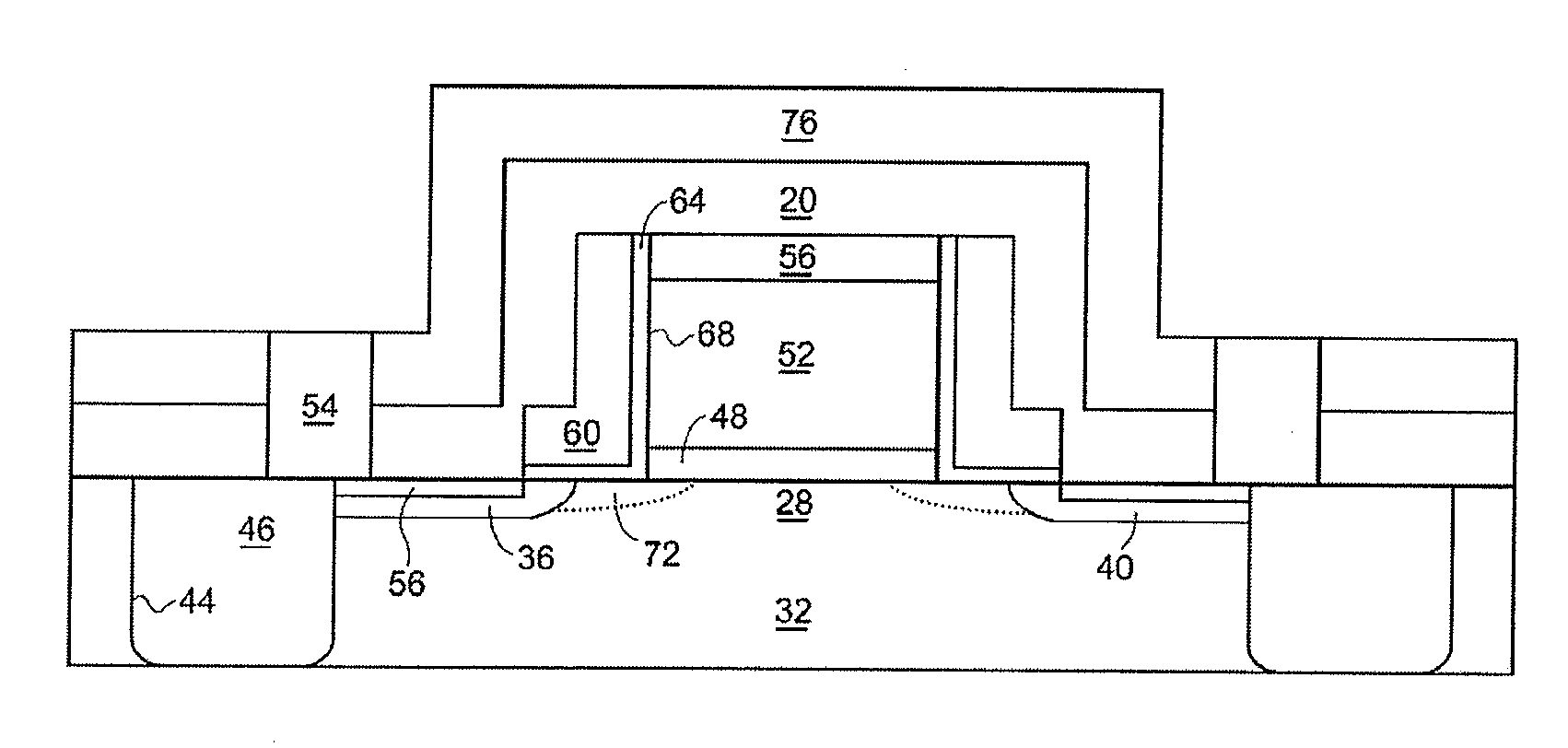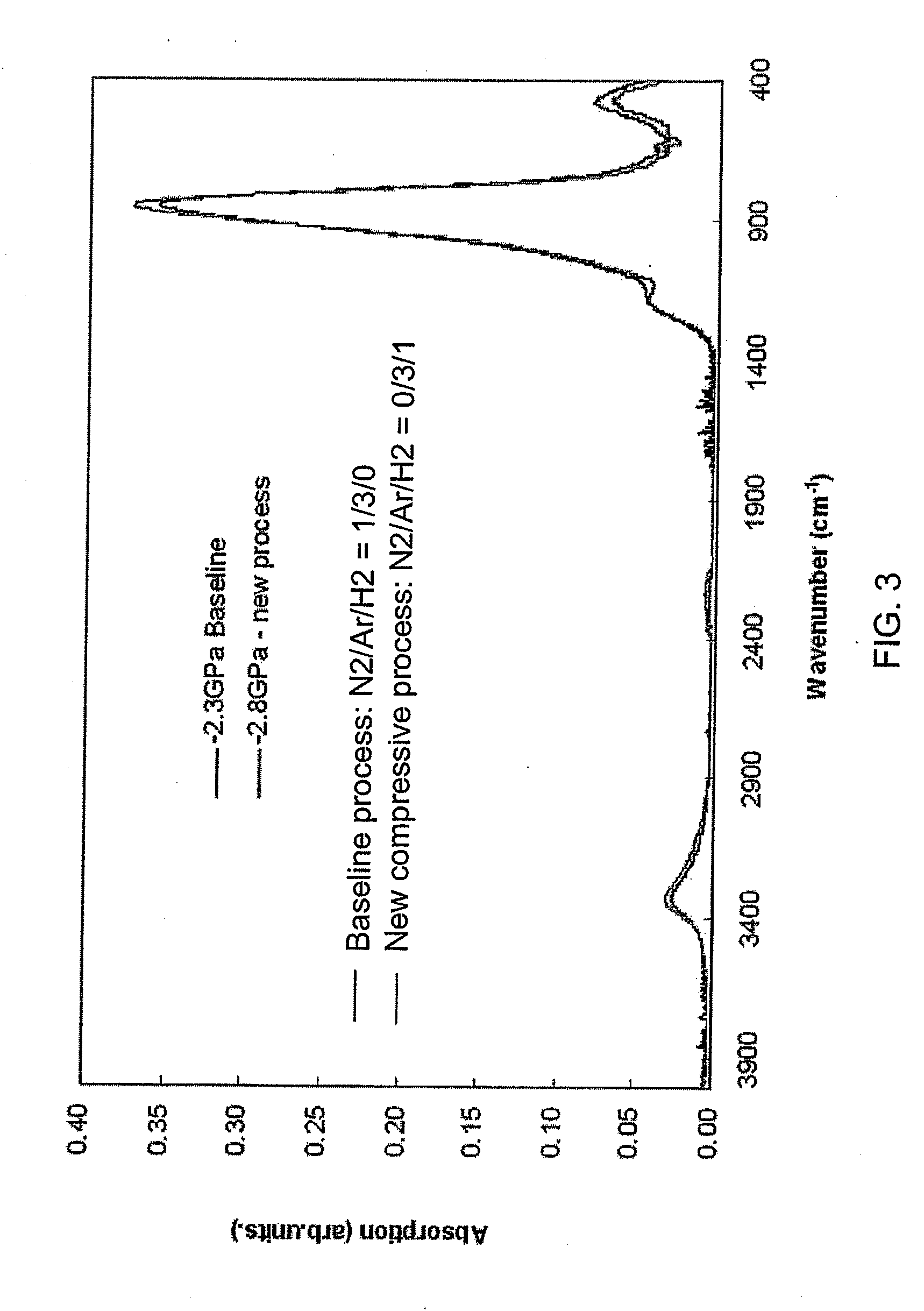Method to increase silicon nitride tensile stress using nitrogen plasma in-situ treatment and ex-situ UV cure
a technology of nitrogen plasma and tensile stress, which is applied in the direction of coating, transistor, chemical vapor deposition coating, etc., can solve the problems of gate delay, the size and spacing of the device becomes ever smaller, and the conventional methods face mounting problems, etc., to improve the performance of the underlying mos transistor device, enhance the stress, and enhance the stress
- Summary
- Abstract
- Description
- Claims
- Application Information
AI Technical Summary
Benefits of technology
Problems solved by technology
Method used
Image
Examples
first embodiment
[0150]In accordance with the first embodiment just mentioned, a plasma pre-treatment step prior to deposition of silicon nitride in the presence of hydrogen can be employed. This pre-deposition plasma treatment cleans the wafer surface, removing contamination that could render the surface susceptible to penetration by hydrogen, such as residual silane or metallic contaminants such as Zn and Na. The plasma utilized for this pre-treatment step may be formed from a number of different ambients, including but not limited to N2O, O2 and NH3-containing plasmas which have been successfully used to reduce the number of defects of the nitride film post anneal. The pre treatment may be applied in the same or in a different processing chamber in which the SiN is deposited. The plasma treatment may conclude prior to the subsequent deposition step, or may be continuous and extend into the SiN deposition step. The specific parameters of this plasma pre-treatment, such as duration, power, temperat...
second embodiment
[0151]In accordance with the present invention mentioned above, defects can be reduced and reliability improved, by forming a buffer layer on the surface that is to receive the high compressive stress nitride. Such a buffer layer, typically comprising oxide, will then be located at the nitride / NiSix interface. This oxide serves as a buffer layer, blocking hydrogen diffusing through the deposited SiN film. Atomic hydrogen reaching the oxide buffer will attempt to combine with other hydrogen atoms to form molecular hydrogen, but will be unsuccessful in doing so owing to the strength of the Si—N, Si—H, and N—H bonds. Specifically, hydrogen diffuses by hopping from one Si—H or N—H bond to another. To migrate out of the nitride layer into the oxide layer, and Si—O bond needs to break and an Si—N bond will form. This reaction id not energetically favorable, so the hydrogen will remain trapped in the nitride layer. In this manner, the oxide buffer layer acts as a wall, preventing gas accum...
PUM
| Property | Measurement | Unit |
|---|---|---|
| length | aaaaa | aaaaa |
| length | aaaaa | aaaaa |
| power | aaaaa | aaaaa |
Abstract
Description
Claims
Application Information
 Login to View More
Login to View More - R&D
- Intellectual Property
- Life Sciences
- Materials
- Tech Scout
- Unparalleled Data Quality
- Higher Quality Content
- 60% Fewer Hallucinations
Browse by: Latest US Patents, China's latest patents, Technical Efficacy Thesaurus, Application Domain, Technology Topic, Popular Technical Reports.
© 2025 PatSnap. All rights reserved.Legal|Privacy policy|Modern Slavery Act Transparency Statement|Sitemap|About US| Contact US: help@patsnap.com



